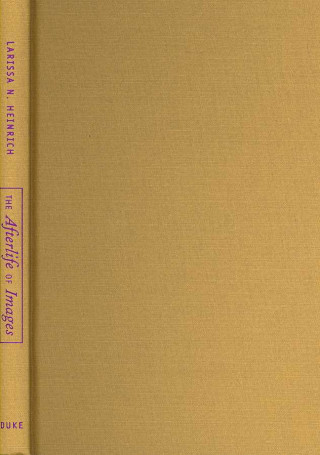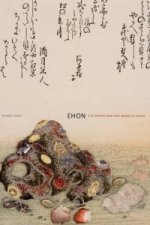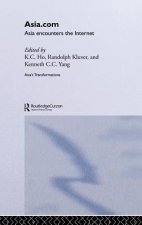
Kód: 04938626
Afterlife of Images
Autor Larissa N. Heinrich
In 1739, China's emperor commissioned images of children with smallpox to aid in the diagnosis and treatment of the disease. Those images made their way to Europe, where they were interpreted as indicative of the ill health and me ... celý popis
- Jazyk:
 Angličtina
Angličtina - Vazba: Pevná
- Počet stran: 248
Nakladatelství: Duke University Press, 2008
- Více informací o knize

2411 Kč
Dostupnost:
50 % šance Máme informaci, že by titul mohl být dostupný. Na základě vaší objednávky se ho pokusíme do 6 týdnů zajistit.
Máme informaci, že by titul mohl být dostupný. Na základě vaší objednávky se ho pokusíme do 6 týdnů zajistit.Prohledáme celý svět
Mohlo by se vám také líbit
-

India: the road ahead
494 Kč -

Sea Witch
343 Kč -

Stash Plan
465 Kč -

Jewelry Box Coloring Book
346 Kč -

New Creations Coloring Book Series: Fashion - Edwardian Era
302 Kč -

I Am Elsa (Disney Frozen)
152 Kč -

Moleskine Pro Project Planner 12 Months Extra Large Black
797 Kč -

Japanese Gardening
464 Kč -

Robotic Process Automation Projects
1342 Kč -

Horizons One Sketch a Day
357 Kč -

The Art of the Hobbit
1087 Kč -

Deserter: Junji Ito Story Collection
465 Kč -

Batman: Last Knight On Earth
581 Kč -

CompTIA Network+ Certification All-in-One Exam Guide, Eighth Edition (Exam N10-008)
1145 Kč -

Boruto: Naruto Next Generations, Vol. 13
252 Kč -

No Longer Human
509 Kč -

The Fall of Númenor
835 Kč -

Difficulties of Translating Humour
1651 Kč -

Vintage Tattoos
758 Kč -

Batman v Superman: Dawn of Justice: The Art of the Film
810 Kč -

500 Hidden Secrets of Amsterdam
573 Kč -

Mystic River
303 Kč -

Beyond 3D
372 Kč -

Guidelines for Air and Ground Transport of Neonatal and Pediatric Patients
2855 Kč -

Malaria
3284 Kč -

Kay Nielsen. East of the Sun and West of the Moon
773 Kč -

Just Add Watercolor
505 Kč -

Batman Vol. 9: Bloom (The New 52)
372 Kč
Dárkový poukaz: Radost zaručena
- Darujte poukaz v libovolné hodnotě a my se postaráme o zbytek.
- Poukaz se vztahuje na celou naši nabídku.
- Elektronický poukaz vytisknete z e-mailu a můžete ihned darovat.
- Platnost poukazu je 12 měsíců od data vystavení.
Informovat o naskladnění knihy
Zadejte do formuláře e-mailovou adresu a jakmile knihu naskladníme, zašleme vám o tom zprávu. Pohlídáme vše za vás.
Více informací o knize Afterlife of Images
Nákupem získáte 241 bodů
 Anotace knihy
Anotace knihy
In 1739, China's emperor commissioned images of children with smallpox to aid in the diagnosis and treatment of the disease. Those images made their way to Europe, where they were interpreted as indicative of the ill health and medical backwardness of the Chinese. In the mid-nineteenth century, the celebrated Cantonese painter Lam Qua collaborated with the American medical missionary Peter Parker in the creation of portraits of Chinese patients with disfiguring pathologies, rendered both before and after surgery. Europeans saw those portraits as evidence of Western medical prowess. Within China, the visual idiom that the paintings established influenced the development of medical photography. In "The Afterlife of Images", Larissa N. Heinrich investigates the creation and circulation of Western medical discourses that linked ideas about disease to Chinese identity beginning in the eighteenth century. Combining literary studies, the history of science, and visual cultural studies, Heinrich analyzes the rhetoric and iconography through which medical missionaries transmitted to the West an image of China as 'sick' or 'diseased', as well as the absorption of that image back into China through missionary activity and through the earliest translations of Western medical texts into Chinese. Heinrich argues that over time 'scientific' Western representations of the Chinese body and culture accumulated a host of secondary meanings, taking on an afterlife with lasting consequences for conceptions of Chinese identity in China and beyond its borders. Through readings of the fiction of the doctor-turned-writer Lu Xun, she chronicles how ideas of the Chinese character as weak and fundamentally diseased were absorbed even into the literature of Chinese nationalism.
 Parametry knihy
Parametry knihy
Zařazení knihy Knihy v angličtině Reference, information & interdisciplinary subjects Interdisciplinary studies Regional studies
2411 Kč
- Plný název: Afterlife of Images
- Podnázev: Translating the Pathological Body Between China and the West
- Autor: Larissa N. Heinrich
- Jazyk:
 Angličtina
Angličtina - Vazba: Pevná
- Počet stran: 248
- EAN: 9780822340935
- ISBN: 0822340933
- ID: 04938626
- Nakladatelství: Duke University Press
- Hmotnost: 366 g
- Rozměry: 156 × 234 × 20 mm
- Datum vydání: 20. February 2008
Oblíbené z jiného soudku
-

Work Songs
1256 Kč -

Bhagavad Gita
969 Kč -

Japanese Mind
363 Kč -

Black Garden
825 Kč -

Qatar
542 Kč -

Lengthened Shadows
447 Kč -

Tantra
1186 Kč -

African Genius
906 Kč -

Making Sense of the Central African Republic
762 Kč -

Architecture and Tourism in Italian Colonial Libya
1088 Kč -

Reformation of Morals
921 Kč -

Dark Sahara
3119 Kč -

Modern Greece
411 Kč -

Did David Hasselhoff End the Cold War?
252 Kč -

Routledge Companion to Critical and Cultural Theory
1522 Kč -

S.E.A. Write Anthology of Thai Short Stories and Poems
634 Kč -

Political History Of Zambia
896 Kč -

Politics of Knowledge
1318 Kč -

Sport in Latin America and the Caribbean
1744 Kč -

Wild Europe
606 Kč -

New Regionalism in Western Europe
1110 Kč -

Ehon
1807 Kč -

Wandering with Sadhus
795 Kč -

Creative Cities, Cultural Clusters and Local Economic Development
3924 Kč -

Giovanni Sartori
3117 Kč -

Finland, Cultural Lone Wolf
597 Kč -

Handbook on Anti-Money Laundering and Combating the Financing of Terrorism for Nonbank Financial Institutions
677 Kč -

Conservative Party - From Thatcher to Cameron, 2e
1268 Kč -

Stories Old and New
1533 Kč -

Cities & Networks in Europe
1126 Kč -

Makassar Annals
1238 Kč -

French Colonialism Unmasked
789 Kč -

Kiss of the Yogini
1277 Kč -

Liberia
832 Kč -

American Studies - An Anthology
2492 Kč -

Social Atlas of Europe
4341 Kč -

Russia's Road to Modernity
355 Kč -

Blood, Land, and Sex
816 Kč -

African Renaissance
1611 Kč -

Bloodroot
939 Kč -

Positively No Filipinos Allowed
2681 Kč -

Space, Politics, and Cultural Representation in Modern China
5564 Kč -

Asia.com
4871 Kč -

Giovanni Sartori
1066 Kč -

Xinjiang - China's Northwest Frontier
5172 Kč -

Contemporary Latin American Cultural Studies
1460 Kč -

Sword and the Flute-Kali and Krsna
991 Kč -

Universities Remembering Europe
4190 Kč -

Asia.com
1936 Kč
Osobní odběr Praha, Brno a 12903 dalších
Copyright ©2008-24 nejlevnejsi-knihy.cz Všechna práva vyhrazenaSoukromíCookies


 Vrácení do měsíce
Vrácení do měsíce 571 999 099 (8-15.30h)
571 999 099 (8-15.30h)